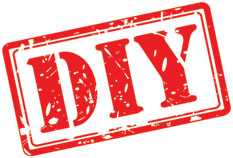Chimney Liner Installation Is Not A DIY Task
In today’s internet-driven world, there are websites trying to convince you that chimney liner installation is an easy do-it-yourself task. Please don’t fall for that.
Working on chimneys is specialized work that can often be dangerous. Each chimney is different and each can contain hidden challenges that only an experienced professional can safely meet.

And the operative word is “safely.” It’s not only the installation process itself that can be risky. The bigger concern is after the installation of a liner not properly installed. After all, a chimney is designed to safely contain smoke and fire. The slightest mistake has serious consequences.
Which is why the “lifetime warranties” of these chimney liners all require that they be cleaned and inspected, usually yearly – but always by a chimney professional – not by you. In other words, they are saying “Sure, go ahead and install your own liner, but we will only stand behind it if a professional cleans and inspects it.”
Well, ask yourself, if liner installation is so safe and easy, how come their warranty demands yearly maintenance by a professional – not by you? It would seem the seller knows the dangers and wants a professional checking on their liner every year.
You can avoid these risks by choosing one of HomeSaver’s professional installers listed here on the HomeSaver website. These professionals offer your family the peace of mind of experienced installation and proper warranty maintenance.
DIY is fine for many tasks around the house. But when your home needs a chimney liner, choose a HomeSaver Chimney Professional, and enjoy your winters in confidence, not in worry.